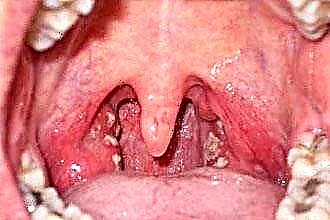
Development of pathology
Biliary hypertension is a disease that develops as a result of improper functionality of the bile ducts and their sphincters. The outflow of bile is impaired, provoking an increase in pressure inside the biliary tract and obstructed blood flow inside systems and organs.
Hypertension of the bile ducts is a stable syndrome, during which a person's vascular pressure inside the biliary tract rises to 160/140 mm. rt. pillar. If a person begins to use antihypertensive drugs not prescribed by a doctor, then these attempts become ineffective. Consequently, the patient is forced to consult a specialist to identify the reasons for the obstruction of the bile outflow.
As a rule, biliary hypertension appears due to the occurrence of pathological processes in the gallbladder or other factors that prevent the full functionality of the bile ducts.
The disease arises from the following factors:
- From the appearance of tumors localized in the biliary tract, as a result of which the outflow of bile is disturbed. Similarly, these deviations provoke neoplasms of nearby organs, crushing the ducts that carry out the withdrawal of bile.
- Due to calculous cholecystitis or gallstone disease. This is the formation of hard stones (insoluble) in the hepatobiliary system. The result is jaundice of mechanical origin.
- When parasitic worms enter the bile ducts. Having settled in the human biliary tract, helminths begin to poison the body with toxins and multiply. As a result, they close the lumen of the vessels or organs responsible for the outflow of bile.
- If biliary hypertension is detected in childhood, it is necessary to examine the bile ducts for abnormal development, characterized by a narrowing of the venous lumen or an altered shape.
Varieties of biliary hypertension
When diagnosing a patient, doctors establish a specific type of biliary hypertension, characterized by the degree of complexity and the presence of complications. Thanks to these data, a specialist can choose the most effective treatment and save a person's life.
 Biliary hypertension is characterized by the prevalence of high blood pressure. This factor contains 2 possible variants of the course of the disease: segmental or total.
Biliary hypertension is characterized by the prevalence of high blood pressure. This factor contains 2 possible variants of the course of the disease: segmental or total.
- Total hypertension implies a complete defeat of all vessels of the portal system.
- Segmental is characterized by impaired blood flow in the splenic vein. However, with this course of the disease, the pressure in the portal vein remains normal.
Determined by the location of the venous block:
- Intrahepatic hypertension is the result of blockage of blood flow within the hepatic portal vein.
- Prehepatic - appears due to obstructed venous blood flow in the vessels that supply blood to the liver.
- Posthepatic - occurs due to difficulty in the movement of blood from the liver into the vena cava (inferior).
- Mixed. In this case, several types of biliary hypertension can be observed, complicating the patient's condition and the appointment of therapy.
By severity:
- The initial stage is determined by a slight violation of the functionality of the bile ducts.
- Moderate - in this case, the failure and working functionality of the bile ducts is compensated.
- Expressed - at the same time, an accumulation of fluid appears in the abdominal cavity, which leads to an increase in the size of this area.
- Complicated - provokes the onset of renal failure or internal bleeding.
Having investigated all these factors, the doctor begins to prescribe the optimal therapy that will alleviate the patient's condition and reduce the patient's susceptibility to complications.
Symptoms
Biliary hypertension causes a variety of symptoms. If we are talking about jaundice, then one of the visible symptoms is a yellow complexion and eye sclera of the patient.
At the initial stage of the disease, you can not pay attention to the symptoms that appear, because it is poorly expressed. However, sometimes in the early stages of the disease, the following symptoms of the disease may occur:
- Bloating.
- Vomiting and nausea.
- General weakness.
- Regular belching.
- Decreased appetite or unwillingness to eat.
- Unpleasant taste in the mouth, possibly a perversion of taste (appearance of bitterness in the mouth).
- Pain in the epigastric region and the area of the right-sided hypochondrium.
- Flatulence (increased gas production).
With severe or complicated form of biliary hypertension, the following are added to the above symptoms:
- Modification of stool. Feces become suspiciously light or clear due to lack of bile.
- The urine becomes dark in color.
- Flatulence appears due to abnormal digestion of food associated with a lack of bile.
- The anterior abdominal veins become dilated.
For the appointment of urgent therapy, a thorough diagnosis will be required, in which specialists can detect fluid in the abdominal cavity, an enlarged spleen and other factors confirming the presence of the disease. Otherwise, human organs may fail to function.
If biliary hypertension is detected at an advanced stage (with complications), in addition to the above-described symptoms, there may be bleeding resulting from damage to the veins of the digestive system and rectum, severe kidney failure. Very often, these deviations are accompanied by leukopenia, thrombocytopenia and a critical lack of iron in the body. Such a nuisance appears due to the destruction of blood cells, particles of which are deposited in the spleen.
If the patient refuses treatment or does not want to visit the clinic, then he may incur even greater danger. With cholangitis, a purulent inflammatory process of the biliary tract, microbes that cause infection are detected.
Also, due to the impaired outflow of bile, liver cells gradually die off, and in their place fibrous tissue appears, provoking biliary cirrhosis. A liver abscess may also occur, in which a cavity filled with pus forms inside the liver.
If a person turns to a doctor for help on time, then the above problems can be avoided and lower costs for treatment can be incurred. It is recommended that the whole family undergo an examination of the body every year in order to prevent severe forms of many diseases, including biliary hypertension.
Diagnostics
To establish the cause of biliary hypertension or to confirm the diagnosis, instrumental methods of examination of the patient will be required. The most informative of them are:
- Ultrasound.
- CT scan.
- Radiopaque research methods.
- Biopsy.
- Laparoscopy.
 Ultrasound of the bile ducts is a non-invasive method for examining the retroperitoneal space, which works on the basis of ultrasound radiation, which is safe for the patient's health. In this case, the level of blockage of the bile ducts is determined, the expansion of the intra- and extrarenal bile ducts.
Ultrasound of the bile ducts is a non-invasive method for examining the retroperitoneal space, which works on the basis of ultrasound radiation, which is safe for the patient's health. In this case, the level of blockage of the bile ducts is determined, the expansion of the intra- and extrarenal bile ducts.
When a disease with a distal level of blockage of the bile ducts is detected, an expansion of the hepaticoholedochus appears. If you do not take any measures, then over time, the ducts located inside the kidneys expand, increasing the diameter of the gallbladder. The duct, over 10 mm in size, appears due to the appearance of a tumor (over 50% of cases).
Computed tomography can also visualize organs without interfering with the integrity of the human body. The results of the study allow us to assess the size of the emerging tumors and neoplasms, their localization and proliferation to nearby organs and structures.
X-ray contrast studies involve the introduction of a contrast agent into the body, which clarifies the darkened areas of the internal organs. As a result, the damaged areas are well displayed on the X-ray, making it possible to assess the ability of the bile ducts to function normally.
A biopsy is a rare test. In this case, doctors have to take a small piece of pathological tissue from the body. The procedure is performed under the supervision of specialists using ultrasound equipment. The results of the study of the obtained tissue make it possible to determine whether the neoplasm is good or malignant.
If the above methods did not help to obtain enough information about the causes of the disease, then laparoscopy is performed, which is an operation. At the same time, doctors can examine the damaged areas and at the same time carry out treatment, take a sampling of biomaterials for further research. Based on the identified pathological disease, repeated surgical treatment is performed.
Treatment
Getting rid of biliary hypertension is performed only after a complete examination and establishment of all factors of the disease: localization and stage of the disease, the reasons for its appearance. Then the question of the use of conservative or surgical treatment is decided.
Conservative treatment is performed in the case of a person's stable normal state of health. The doctor prescribes medications to help restore blood flow inside the bile ducts. Also, this therapeutic technique is used to prepare the patient for surgery.
In this case, apply:
- ACE inhibitors.
- Nitrates.
- Glycosaminoglycans.
- Beta-blockers.
Most often, with biliary hypertension, doctors prescribe one or more drugs from this list to patients:
- "Nitrosorbit".
- Ednith.
- "Nitroglycerine".
- Anaprilin.
- "Sulodexide".
- "Atenolol".
- "Monopril".
These medicines help well in identifying a moderate or early stage of the disease, but one should not self-medicate without establishing an accurate diagnosis from a doctor. Improperly selected means can further harm the liver, or completely disable it.
Surgical intervention (surgical) is required to remove neoplasms that compress the intrabiliary vein and provoke biliary hypertension. If the source of the appearance of biliary hypertension is gallstone disease, then it will be necessary to surgically remove the gallbladder, along with the stones located inside. In this case, the patient does not have time to think, and the operation is performed within several days.
When a malignant tumor is detected, specialists carry out conservative treatment, radio- and chemotherapy, and then proceed to remove the neoplasm. This approach to treatment allows you to get rid of metastasis in the blood and reduce the size of the neoplasm.
If a polyp (benign tumor) is found that provokes biliary hypertension, it is removed, a small piece is cut off and sent for examination to assess the possibility of tumor degeneration. Such neoplasms can transform from benign into malignant ones.
For jaundice that provokes biliary hypertension, treatment is performed in 2 stages:
- Temporary restoration of the functionality of the bile ducts using percutaneous and endoscopic techniques.
- An operation is performed that reduces the risk of complications that cause fatal consequences. This activity is performed when all the symptoms of the disease have passed.
If problems with biliary hypertension (congenital) are detected in a child, then surgical intervention is performed in order to install a special expanding material into the narrowed canal. This allows you to normalize the outflow of bile and eliminate the disease.
The earlier the patient consulted a doctor and discovered hypertension, the easier the surgery proceeds.
It is recommended to pay attention to even the slightest pain, discomfort in the abdominal region in order to cure the disease in a timely manner in a gentle way, protecting yourself from complications.
Hypertension of the bile ducts (biliary hypertension) can lead to death, so you need to carefully monitor your health: react to the behavior of the body and consult a doctor, eat right (so as not to overload the liver), get rid of bad habits and take medications exclusively as prescribed by a doctor. The wrong drugs are powerless against your symptoms, but they force the liver to work harder and help block bile outflow.



